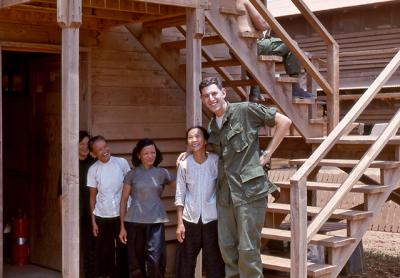Am I My Sisters’ Keeper?
Am I My Sisters’ Keeper?
When the biblical Cain tries to cover up the murder of his brother Abel, we find the first example of an individual shirking culpability for his actions. Cain decides not only to plead ignorance as to the whereabouts of his brother, but mocks the notion of accountability by rhetorically asking, “Am I my brother’s keeper?” (Genesis 4:1). Cain insinuates that he takes no responsibility for the welfare of his brother.
The Bible finds the opposite to be true. Yes, of course we are our brother’s keeper. “Every individual is responsible for his fellow,” declares the Talmud (Shevuot 39b), because our lives are so intertwined that “brothers stumble over one another” (Leviticus 26:37). I might add that not only are we our brothers’ keeper, we are our sisters’ keeper as well.
In the traditional Jewish reading of Scripture, we have just rolled our Torah scrolls back to the start of the book of Genesis. The story of Cain and Abel is sometimes glossed over, but for me this year I find it particularly relevant given the cries of women who are calling out in pain and anguish. When God confronts Cain over his crime, God tells him “the bloods of your brother cry out to me from the ground” (Genesis 4:9).
Commentators point out that the word “bloods” is strangely in the plural. This teaches that it’s not just Abel’s blood that cries out, but the blood of all those under the yoke of affliction. The blood, pain, and anguish of women cry out.
When women cry out, are we listening? Do we just write off the harassment of women as locker-room talk or typical male behavior? Do we throw out a perverse aphorism like “Boys will be boys”?
Senators recently sat before Christine Blasey Ford as she courageously recounted the trauma of being sexually assaulted at the hands, she said, of the Supreme Court nominee Brett Kavanaugh. Were they listening? When two tearful women confronted Senator Jeff Flake in an elevator and one exclaimed, “Don’t look away from me, look at me and tell me that it doesn’t matter what happened to me,” I hope Senator Flake was listening.
We are all our sisters’ keeper, and the blood of our sisters cries out. Senators sat with the question of not only whether to confirm Brett Kavanaugh to the Supreme Court, but also with the pivotal question “Am I my sisters’ keeper?” They unequivocally answered the question about confirmation, but left a lot uncertain regarding the accountability of those who perpetrate sexual assault.
I am concerned that in the course of a judge’s appointment to the Supreme Court, many in our community feel that their cries have gone unheard. I’m not in a place to assess whether Kavanaugh was innocent or guilty. I do feel, however, that there was more at stake for many victims of sexual assault than whether or not a bench seat would be filled. There are those who feel that if senators don’t treat alleged sexual misconduct of the past (even if it happened over 30 years ago) with the weight that it’s due, they by implication give a pass to every perpetrator who permanently scarred a victim.
We are our brothers’ keeper, and we are our sisters’ keeper. And if we can’t protect victims, I hope at the very least we hold each other accountable for misconduct. After all, “every individual is responsible for his fellow.”
Playing the role of Cain seems banally easy. Just act as if the plight of others is of little concern, plug your ears when you don’t want to hear a painful cry, and write off the testimony of a sexual assault victim as a partisan political strategy. Cain is our anti-model, the opposite of the virtues to which we aspire. We are our brothers’ keeper, and we are our sisters’ keeper.
Josh Franklin serves as the rabbi of the Jewish Center of the Hamptons in East Hampton.


